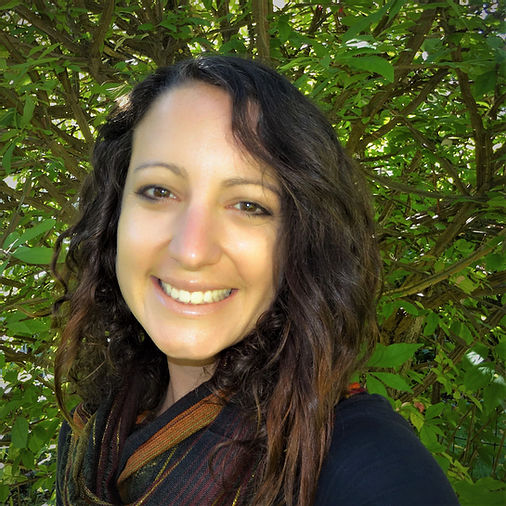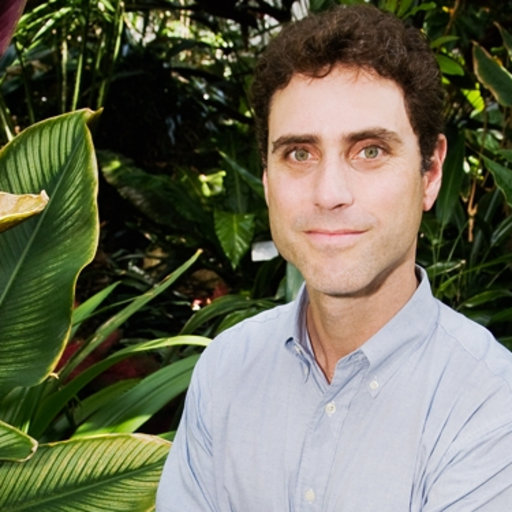S1E60: On the Hunt for the Next Pandemic Virus / Tony Goldberg, Adam Bailey, Jennifer Gardy, Sagan Friant
There’s a lot we don’t know about the origin of the SARS-CoV-2 virus but there is a consensus that it came from animals. This is called zoonosis. HIV, Zika, and Ebola were all viruses in animals before jumping to humans. This is a serious problem. Most new or emerging infectious diseases are the result of zoonotic transmission and we’re seeing more zoonotic diseases appear at a faster rate than ever before. In this episode of EPIDEMIC, we speak to some of the scientists looking for the next potential pandemic virus and what could be done to reduce the risk of spillover events in the future.
Tony Goldberg: When we interact with nature in specific ways, there are very unpredictable and weird mechanisms by which pathogens might be able to move between species.
Jennifer Gardy: Disruptions in environment, disruptions in animal health, can lead to disruptions in human health.
Céline Gounder: You’re listening to EPIDEMIC, the podcast about the science, public health and social impacts of the coronavirus pandemic. I’m your host, Dr. Celine Gounder.
Tony Goldberg is a Professor of Epidemiology in the School of Veterinary Medicine at the University of Wisconsin.
Tony Goldberg: I am a disease ecologist, so I study the ecology transmission and evolution of infectious diseases in nature.
Céline Gounder: When Tony’s not in Wisconsin, he’s in Uganda. He’s spent years researching emerging diseases and how they spread in Kibale National Park. Back in 2012, Tony was traveling back to the United States from one of his research trips. But something was off…
Tony Goldberg: I returned from my field site in Kibale National Park, Uganda with a pain in my nose.
Céline Gounder: It was … a nose tick.
Tony Goldberg: They are notorious for going way up your nose and attaching. So everybody who works in this forest site knows about these things. They all hate them, but there’s not much you can do except wait for them to detach and, and sneezing them out, which, which usually happens on the checkout line of Walmart or something like that, which clears the place out pretty well.
Céline Gounder: This is a pretty horrifying thing to imagine — a tick way up your nose — but Tony’s a scientist so … he decided to study it.
Céline Gounder: How did you get the tick out?
Tony Goldberg: I won’t go into too much detail, but it involved a flashlight, a mirror and some tweezers.
Céline Gounder: So, once Tony plucked this tick out of his nose, he reached out to a friend who just happens to be an expert in tick genetics. They sequenced the tick’s DNA and… it turned out… Tony’s tick was an undiscovered species.
Tony Goldberg: So the headline was: “Scientist Returns from Africa with New Species of Tick in His Nose.” I became locally famous. There was a brief period of time when people actually recognized me and came up to me in public and said, “Oh my gosh, you’re the nose-tick guy!”
Céline Gounder: When these ticks aren’t snacking on researchers from Wisconsin, they’re normally found up the noses of chimpanzees. As far as the tick was concerned, Tony was just another chimp. Tony didn’t get sick from all this. But random events like a tick biting someone is how a disease could move from those chimps to humans.
Tony Goldberg: The personal experience of being the victim of a vector infestation at that time made me realize that there are many, many ways that cross species transmission of pathogens can happen that are essentially unpredictable. I doubt anybody could have predicted that there was a species of tick that would go into somebody’s nose and fly across the ocean, back to Madison, Wisconsin from Africa. The truth of ecology is stranger than fiction.
Céline Gounder: There’s a lot we don’t know about the origin of the SARS-CoV-2 virus. But there is a consensus that it jumped from animals — like bats — to people. This is called zoonosis, or spillover… the spread of diseases from animals to people. HIV, Zika, SARS… they all were viruses in animals before jumping to humans.
And this mode of transmission is a serious problem. Most new or emerging infectious diseases are the result of zoonotic transmission. And we’re seeing more zoonotic diseases appear at a faster rate than ever before.
In this episode of EPIDEMIC, we’re going to speak to some of the scientists working to find the next potential pandemic virus.
We’ll hear how people search for new viruses in the field and in the lab…
Adam Bailey: If we are going to be able to get ahead of the curve at all, as opposed to just responding to things that emerge, we need to have a better understanding of the biology of these viruses.
Céline Gounder: What causes these zoonotic events…
Jennifer Gardy: Humans changing interaction with wildlife and animals and the environment that they live in is contributing to some of these spillover events.
Céline Gounder: And what could be done to reduce the risk of spillover events in the future.
Sagan Friant: Unfortunately, this is a complex wicked problem. That’s not going to have one magic bullet solution.
Céline Gounder: Today on EPIDEMIC — on the hunt for the next pandemic virus.
It’s no accident that Tony studies emerging diseases in a place like Uganda.
Tony Goldberg: Some viruses that people know very well, they might not realize they’re actually named for places in Uganda. For example, West Nile virus is named for the West Nile district of Uganda.
Céline Gounder: One of the big reasons why Uganda is a good place to look for new pathogens is its biodiversity. And Kibale National Park is one of the most biodiverse places in Africa.
Tony Goldberg: We know from the history of emerging infectious diseases, that there are three orders of mammals that are responsible for most of the human infections that we’ve acquired through zoonotic transmission over the eons: rodents, bats, and primates. So I work in Kibale because it has a rich, diverse, and abundant community of primates.
Céline Gounder: In disease ecology, these kinds of animals are called reservoirs — hosts where a virus can live and lie in wait to pass on to people. If someone gets bitten, or cuts themselves butchering a wild animal, or maybe even gets a tick up their nose… that can be all it takes for a pathogen to move from one animal reservoir into a person.
One of the main reasons for this is because of how humans are changing the environment. Deforestation for agricultural purposes is a good example.
Tony Goldberg: I go into these fragmented landscapes in Africa and in the middle of a forest fragment, which may not be any bigger than four or five football fields. There’s a group of monkeys and a goat. Now you’d never see monkeys on a goat hanging out together under normal circumstances. But they’re meeting each other because their paths are intersecting due to the way we change the landscape. So there is a notion that these sorts of activities are increasing contact rates between people and reservoirs or between other animals and reservoirs.
Céline Gounder: So, what does all this look like in practice? Well, it turns out, a lot like a National Geographic documentary.
Tony Goldberg: When I’m out in the field, it’s very different from Wisconsin. Kibale is a montane forest. So it’s a bit of an anomaly. It is on the equator or close to the equator. So you think it’s hot, but it’s not because it’s high altitude. So it’s cool and relatively dry. It’s very hilly. So on a daily basis, I will hike up and down and up and down hills and sometimes there are big trails through nice dry forest. Sometimes we have to cross papyrus swamps or other nasty places. And what we’re usually doing is observing animals, observing monkeys, for example.
Céline Gounder: Sometimes those animals get sick. One time, Tony’s team noticed what looked like a respiratory virus in a troop of chimpanzees.
Tony Goldberg: My team reports that the chimpanzees in Kibale National Park have started to cough and sneeze, and they’re lying on the ground lethargic and they look really, really bad. And over the next few days, chimpanzees start to die and nobody knows why. And I will go into the forest with my veterinary colleagues in Uganda, and we will do a post-mortem examination. And as part of that examination, we’ll describe what we see and collect biological samples for analysis.
Céline Gounder: Those samples could be blood or maybe lung tissue, if they think it’s a respiratory virus. There’s some lab work that can be done in the field. But the more advanced work needs to be sent back to his lab in Wisconsin.
Tony Goldberg: And the idea there is that we will extract all of the DNA and RNA in that sample of lung. And we will put it on a DNA sequencer that will randomly generate millions upon millions of sequences of the DNA and RNA that were originally in that tissue. Then we take those millions of millions of sequences and we feed them into the computer where there’s software that will sort through them and try to match those sequences with the sequences of known viruses or other pathogens. And what we’re looking for is what we call a hit. That’s when one or more of those sequences looks identical to, or a lot like a virus that we know.
Céline Gounder: One of their big hits was a wild version of a nasty fever that had been found in lab primates. It’s called simian hemorrhagic fever virus.
Tony Goldberg: So I brought back the samples and I collaborated with my colleagues, Dave O’Connor and Tom Friedrich, at the primate center here at UW Madison, and together, we had this wonderful set of discoveries beginning with simian hemorrhagic fever virus. And I’ll tell ya, it’s hard to describe the thrill of discovery of when something like that pops out of the computer and you know, that you’re the first person in the world to know the answer to a long-standing mystery.
Céline Gounder: Adam Bailey was working in that same lab when he was getting his MD-PhD at the University of Wisconsin. Today he’s a post-doc researcher at Washington University in St. Louis.
Adam Bailey: And I’m very fortunate to be heading back to Madison as faculty in July in the pathology department where I’ll be studying zoonotic diseases, mainly Yellow Fever and Ebola to start out with.
Céline Gounder: There are several things Adam looks for when it comes to a virus with zoonotic potential.
Adam Bailey: Like, what is the relatedness to a virus that is known to have emerged from an animal reservoir to infect humans. Viruses that are alike tend to behave alike.
Céline Gounder: Another is how similar the infected animal is to a human. It’s easier for a virus in a monkey to jump to a human, let’s say, than a snake virus. Regardless which animal the virus comes from, there’s always going to be some incompatibility with a human host. Something has to change in that virus that allows it to transmit to people.
Adam Bailey: You can think of that sort of like picking a lock. So the virus needs to pick the cellular lock in order to gain access. If the virus has a large degree of genetic variability you could imagine that instead of having a single key to try the lock of a new cell, that virus now has a whole chain of keys at its disposal to try.
Céline Gounder: This is why many zoonotic diseases come from RNA viruses. SARS-CoV-2, West Nile, and Ebola are all RNA viruses that jumped from animals to humans.
Adam Bailey: RNA viruses have a high mutation rate, and this allows them to, again, with the lock and key analogy, it allows them to generate many different types of new keys to test in cellular locks constantly and, and more quickly than other microorganisms. And so it’s thought that that is one of the reasons why RNA viruses are much more likely than other types of pathogens to emerge as threats to human health.
Céline Gounder: Another factor is how much of the virus is around when someone is exposed.
Adam Bailey: If a single drop of blood from that animal has one virus particle in it. It’s probably much less likely to cause a productive infection in that human than compared to if that single drop of blood had a billion virus particles in it.
Céline Gounder: Finally, it’s important how much of the virus is present in the population of monkeys or rats or bats someone may come in contact with in the wild.
Adam Bailey: If a hunter goes out and kills an animal and begins butchering it, if there’s a hundred of those animals in the forest, and only one of them is infected with a potentially pre-emergent pathogen, the likelihood that the hunter got that one animal is relatively low. However, if the prevalence in the animal population is much higher, like 90%, then the likelihood that that hunter is butchering an infected animal is much higher. And so it again gets to this idea of exposure. What is the likelihood of exposure?
Céline Gounder: The work of finding and tracking these potential pandemic viruses is called surveillance. We’ll hear about the tools for tracking emerging diseases and what can be done to avoid the next pandemic. That’s after the break.
* * *
Céline Gounder: Jennifer Gardy is the Deputy Director of Surveillance Data and Epidemiology at the Bill and Melinda Gates Foundation.
Jennifer Gardy: I work on the malaria team, covering everything from better surveillance systems to how do we use genome sequencing as a tool to improve our disease eradication. When we talk about genomic surveillance, which sometimes people call genomic epidemiology. We’re really talking about reading the genetic code, the genetic instructions of a pathogen, a bacterium, a virus, a parasite, to get clues as to how it’s behaving.
Céline Gounder: The virus’s genome can reveal information like what kind of virus it is, where it originated, and how it’s spreading. Take SARS-CoV-2, for example.
Jennifer Gardy: With genome sequencing, scientists were able to very quickly realize that, you know, this is a Coronavirus. It’s a coronavirus we haven’t seen before. It’s not dissimilar to the types of coronaviruses that have caused SARS in the past or MERS more recently, but it’s different.
Céline Gounder: This information was key to developing the right kind of vaccine in record time. It helped public health officials understand the importance of community transmission. And when to take direct action, like restricting travel from hotspots. And genomic surveillance doesn’t have to be limited to nose swabs, blood tests, or animal tissue samples. It can even happen… in a sewer.
Jennifer Gardy: The notion of sewage genomics is that what is circulating in a population will come out of a population and it will come out of a population through their human waste. And it sounds a little bit gross, but it’s actually a really effective way to quickly tap into what’s happening disease-ecology wise in a given neighborhood.
Céline Gounder: So far we’ve talked about finding new viruses in the field, what attributes could make them a threat to people, and how surveillance techniques can help us keep track of them. But there’s an important factor that we haven’t talked about yet — people. A lot of emerging pathogens travel between animals and people because of human behavior. And that’s a difficult thing to change.
Jennifer Gardy: So what I’d like to see in the future is pandemic preparedness plans that don’t just take into account, you know, all the really cool sort of medical interventions and data interventions, but also consider the people. But at the end of the day, it’s about connecting with people. It’s about understanding what’s driving their behavior and how can we move that behavior needle to change in a way that’s going to keep them healthy and keep their community healthy.
Céline Gounder: Sagan Friant is a Professor of Anthropology and Life Sciences at Penn State University. She studies one of the high-risk groups for animal-to-human spillover: bushmeat hunters.
Sagan Friant: Bushmeat is basically just any animal that’s hunted for food. So venison in the U.S. is bushmeat. We just call it bushmeat because it takes place in Africa because that’s the local term that people are using for it. So just like when you’re butchering venison or a rabbit or a pheasant, it often involves direct contact with animal bodily fluids that are potentially infectious.
Céline Gounder: This kind of hunting is different from what many Americans might imagine.
Sagan Friant: Yeah, I think that in the U.S. and in other places we think of hunting kind of as this trophy leisure activity. Right? But that’s not what it looks like in West Africa or in Nigeria, and the areas that I work. It’s generally considered an undesirable livelihood.
Céline Gounder: Take the living conditions for bushmeat hunters.
Sagan Friant: It’s usually a little clear patch of forest and it’s basically just a little hut with some shelter that people can sleep in, but also with an area where they can smoke the meat.
Céline Gounder: Hunting is hard work and often people don’t come back with any meat. So why are some people doing it?
Sagan Friant: So we have cultural drivers, preferences for bushmeat over other meat, economic drivers for the trade. But also, we have evidence that this is really important for nutrition. There’s been studies that I’ve done in Nigeria, studies and other places across Africa, studies that have demonstrated the importance of bushmeat to food security, nutrition, and prevention of nutritional diseases.
Céline Gounder: So it’s not as easy as simply outlawing this kind of hunting.
Sagan Friant: And I also think it’s unethical to create other solutions like law enforcement that’s going to strip people of these resources without providing alternative food resources for them to make sure that they can survive and be healthy in the absence of bushmeat.
Céline Gounder: Instead, Sagan says there needs to be a focus on solutions that reduce the risk for virus spillover and serve people’s immediate needs. One example of this is an effort to combat Lassa fever. Lassa fever is caused by a virus in West Africa. It kills an estimated 5,000 people a year, according to the CDC. And it’s transmitted by a rodent that’s also a major agricultural pest. Sagan says these rodents can do as much damage to a field of crops as a herd of elephants.
Sagan Friant: People might not be motivated to change their behavior just on the fact that these rodents can transmit a disease that they may or may not ever get when they have lots of other concerns about food and economics and whatnot. People might be willing to do that if they can see a benefit to saving their crops or keeping these rodents out of their house. And so trying to find these win-wins that really articulate with local health concerns or local agricultural concerns, I think are really promising avenues for interventions.
Céline Gounder: It’s easy to be in the United States and wag a finger at behaviors that may seem foreign to us. But the pandemic has made it abundantly clear that human behavior is not easy to change, regardless of where you live. Think about news reports during the Ebola outbreak in 2014 that focused on burial practices contributing to the spread of the virus in West Africa.
[excerpt]
Sagan Friant: People are always asking, well, why are people touching dead bodies if they know they’re infectious, why are people eating bushmeat if they know they can get diseases from them? When we think about Ebola in Africa, we think about lack of education and we think about poverty. And we think about all these reasons that people aren’t taking interventions, but we have very well educated, rich people all around us who are not taking basic precautionary measures. And so it really, I think puts in perspective the importance of risk communication and behavioral interventions.
Céline Gounder: The coronavirus pandemic is changing the fields of disease ecology and surveillance.
Tony Goldberg: Nobody, these days is questioning the importance of studying emerging infectious diseases. We’ve been down this road enough with AIDS and SARS and MERS and Zika and Ebola, that nobody would question the importance of studying emerging infectious diseases. It’s just that prior to COVID-19 it was one of the 62,000 problems we had to deal with. So, people saw emerging infectious diseases as important, but no more important than many of these other things. I think the pendulum has swung a little bit and now we’re all painfully aware of the societal importance of emerging infectious diseases in a uniquely and powerfully disruptive way.
Céline Gounder: It altered Tony’s research too. These days he’s investigating if SARS-CoV-2 could jump from humans into bats in the United States — something called reverse zoonosis. If this happens it could make COVID an endemic disease in North America.
But for all the new attention and resources, Tony’s worried that if we focus everything on COVID… we might miss the next pandemic virus.
Tony Goldberg: What it’s also doing that may be a little bit paradoxical, is it’s pulling people’s attention and resources away from the millions upon millions, upon millions of other viruses in the world that have not yet emerged. So I think we absolutely need to devote resources to combating COVID-19, but we can’t lose sight of the future risks of other pandemics.
CREDITS
EPIDEMIC is brought to you by Just Human Productions. We’re funded in part by listeners like you. We’re powered and distributed by Simplecast.
Today’s episode was produced by Zach Dyer and me. Our music is by the Blue Dot Sessions. Our interns are Annabel Chen, Bryan Chen, and Julie Levey.
If you enjoy the show, please tell a friend about it today. And if you haven’t already done so, leave us a review on Apple Podcasts. It helps more people find out about the show!
Follow EPIDEMIC on Twitter and Just Human Productions on Instagram to learn more about the characters and big ideas you hear on the podcast.
We love providing this and our other podcasts to the public for free… but producing a podcast costs money… and we’ve got to pay our staff! So please make a donation to help us keep this going. Just Human Productions is a 501(c)(3) non-profit organization, so your donations to support our podcasts are tax-deductible. Go to EPIDEMIC.fm to make a donation. That’s EPIDEMIC.fm.
And if you like the storytelling you hear on EPIDEMIC, check out our sister podcast, AMERICAN DIAGNOSIS. On AMERICAN DIAGNOSIS, we cover some of the biggest public health challenges affecting the nation today. Past seasons covered topics like youth and mental health; the opioid overdose crisis; and gun violence in America.
I’m Dr. Celine Gounder. Thanks for listening to EPIDEMIC.








